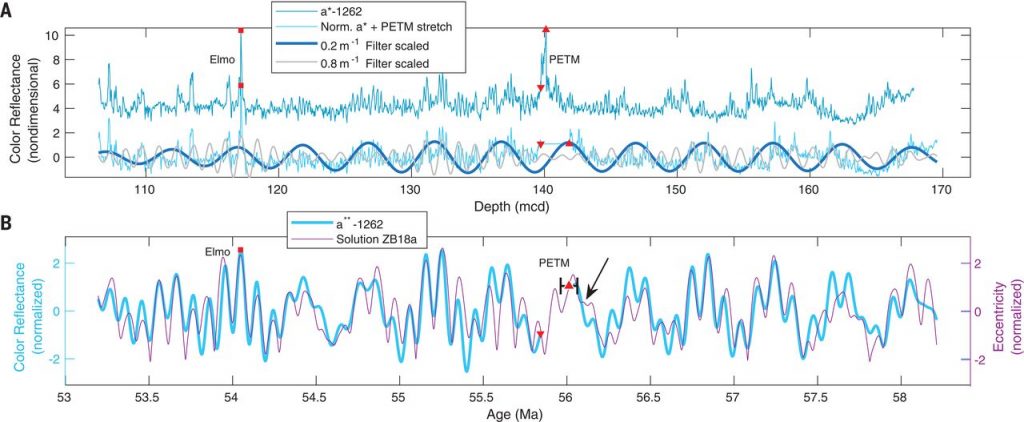Breakthrough to unlock earth’s geologic archives
A new NESSC-publication in Science extends the astronomical time scale by eight million years. NESSC-researcher Lucas Lourens (Utrecht University), together with his colleague Richard Zeebe (University of Hawai’i), analyzed deep-sea drill cores to extend the astronomical time scale beyond 50 million years, by about eight million years. Their new chronology also reveals a new age for the Paleocene-Eocene boundary at 56 million years ago. Additionally, the authors propose an orbital trigger for the onset of the Paleocene-Eocene Thermal Maximum (PETM).
Earth scientists use an astronomical time scale, based on the movements of planets and the sun in our solar system, to study and explain the geological history of the earth. The astronomical calendar of the past provides, amongst others, ages of geologic periods based on astronomy. However, the astronomical time scale does not reach beyond 50 million years, because of disagreeing orbital calculations.
The new breakthrough by Lourens and Zeebe overcomes this obstacle by using geological records to constrain an astronomical chronology. An analysis of deep-sea drill cores from 53 to 58 million years old was used to compare an independently calculated astronomical chronology. The data from the drill cores and the calculated chronology shows exceptional agreement with each other. The new methodology of using climate records to infer the astronomical time scale potentially allows even further extension of the astronomical time scale, unlocking earth’s geological archives step by step.

Orbital trigger
The new astronomical time scale also provides a new age for the Paleocene-Eocene boundary at 56 million years, with a small margin of error (0.1%). The authors furthermore show that the onset of a large ancient climate event, the Paleocene-Eocene Thermal Maximum (PETM), occurred near an eccentricity maximum. This suggests that an orbital trigger began this period of extreme global warming.
The study also has implications for astronomy. The new study shows unmistakable fingerprints of solar system chaos around 50 million years ago.
Article:
Solar System chaos and the Paleocene–Eocene boundary age constrained by geology and astronomy
Richard E. Zeebe, and Lucas J. Lourens
Science 365 (6456), pp. 926-929

